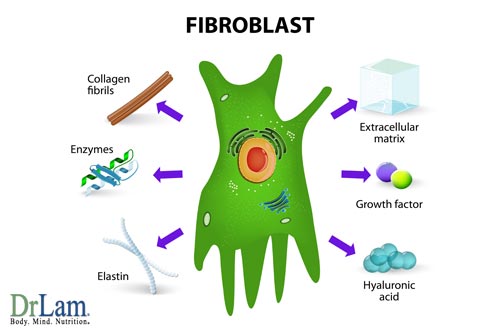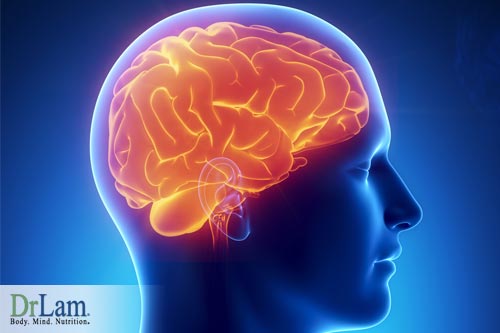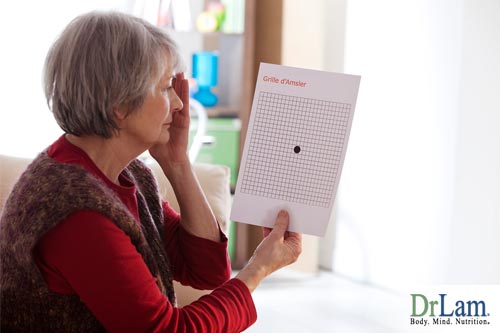 Growth factors (GF) are small protein chains, commonly known as polypeptides that bind to cell surface receptor sites and exert actions directly on the target cells. This is generally done through cellular proliferation and or differentiation. Some GFs exert a generalized effect, while others are cell and action specific. There are many different classes of GFs. Some common ones are: Insulin Like Growth Factor (IGF-1) that is responsible for much of Growth Hormones (GH) action in the body, Interleukins (IL), Fibroblast Growth Factors (FGF), Transforming Growth Factor (TGF), Tumor Necrosis Factor (TNF), Epidermal Growth Factor (EGF), Transforming Growth Factors-b (TGFs-b), and erythropoietin (EPO).
Growth factors (GF) are small protein chains, commonly known as polypeptides that bind to cell surface receptor sites and exert actions directly on the target cells. This is generally done through cellular proliferation and or differentiation. Some GFs exert a generalized effect, while others are cell and action specific. There are many different classes of GFs. Some common ones are: Insulin Like Growth Factor (IGF-1) that is responsible for much of Growth Hormones (GH) action in the body, Interleukins (IL), Fibroblast Growth Factors (FGF), Transforming Growth Factor (TGF), Tumor Necrosis Factor (TNF), Epidermal Growth Factor (EGF), Transforming Growth Factors-b (TGFs-b), and erythropoietin (EPO).
GFs come from a wide variety of sources. Epithelial Growth Factors (EGF) comes from sub maxillary gland, erythropoietin comes from the kidney, and FGF comes from a wide range of cells. A unique family of growth factors that are secreted primarily by leukocytes (white blood cells) are called cytokines. When such cytokines are secreted by lymphocytes, they are called lymphokines. Many of the lymphokines are also known as interleukins (ILs). Not only are interleukins secreted by leukocytes, they are also able to affect the cellular responses of leukocytes.
Different GFs have different jobs to do. Generally, all of them work at the cellular level to:
While hormones generally are more specific and sometimes work through other mediations elicited from its simulation of intermediate organs, GFs often act directly on the target tissue and have a wide range of effect. Its action is mostly stimulatory. It can also work synergistically with other GFs or hormones to elicit a biological effect. Growth hormone, for example, exerts its effect in the body via Insulin-like Growth Factor (IGF-1). In other words, it is the IGF-1 that actually carries out the function of growth hormone and not growth hormone itself.
 FGF is a group of GFs that act on the fibroblast within the body. Fibroblast are basic building blocks of fibrous tissue, including the brain, nervous system, eye, blood vessels, heart, stomach, skin, liver, kidney, muscle and bone. In fact, most cells in these organs possess the receptor for FGF and therefore are susceptible to its biological effect.
FGF is a group of GFs that act on the fibroblast within the body. Fibroblast are basic building blocks of fibrous tissue, including the brain, nervous system, eye, blood vessels, heart, stomach, skin, liver, kidney, muscle and bone. In fact, most cells in these organs possess the receptor for FGF and therefore are susceptible to its biological effect.
There are at least 19 distinct members of the Fibroblast Growth Factor (FGF) family, which interact with at least 4 distinct types of cell-surface receptors. It is evident that FGF is essential for optimum body function, and disruption of FGF can lead to disease states, including achondroplasia and craniosynotosis syndromes.
FGF can be bound to inert, non-toxic polymers to form a conjugated molecule. This is usually done through a series of chemical reactions. Substances commonly used for as polymers include polysaccharides or muco-adhesives.
Fibroblast Growth Factors are small proteins that can be easily denatured when exposed to heat, acid. Ingesting FGF, for example, will expose FGF to gastric acid, which will quickly denature it. When the FGF is conjugated, the protein is more stable and protected from the digestive enzymes, for example. Conjugation can furthermore program the FGF's release from its carrier to ensure that the desired action of the GF on a specific site is maintained.
The natural progression of the aging process is due to cellular degeneration. Oxidative stress and free radical pathology has been well studied in this respect as a causative factor. Fibroblast Growth Factors (FGF) help maintain the target organs in the body that contains fibrous tissue, including eye, heart, brain, skin, and the musculoskeletal system. It helps damaged tissue to be repaired. For example, FGF can help injured nerve tissue to restore to normal function, or damaged blood vessels to be repaired to prevent further clotting or stokes. In the case of duodenal ulcer, it can help the ulcer heal more quickly. Fortification and regrowth of the epidermis and its underlying circulation will lead to healthier skin and less wrinkles.
Non-damaged aging cells can also benefit from FGFs. Laboratory studies, for example, have shown that cells that are unable to replace itself (such as eye tissue), can be stimulated to renew their cell layers. An example of this is the pigmented layer in the eye.
Body parts that response to biological stimulation of FGF include:
 Intense research is underway to further study the therapeutic use of FGF in combating disease and deterring the aging process. The National Institute of Health (NIH), for example is conducting a study on using FGF to treat coronary heart disease in lieu of coronary bypass surgery.
Intense research is underway to further study the therapeutic use of FGF in combating disease and deterring the aging process. The National Institute of Health (NIH), for example is conducting a study on using FGF to treat coronary heart disease in lieu of coronary bypass surgery.
Other animal studies include the use of FGF in:
Commercially available FGF (Fibroblast Growth Factors) is derived from two sources:
Extraction from porcine pituitary and brain, after which it is purified, or from an recombinant technique in cultured animal cells, after which it is purified to become hFGF.
A very good commercially available version sold as FDA approved food supplementation is called MD GeeH Plus, which uses FGF together with a proprietary formula of secretagogue. It comes in a effervescent form to the protect the protein from being denatured in the gastric juice. Normal dose: 1-2 effervescent tablet on empty stomach before sleep.
Commercially available FGFs is of very low dosage and classified as a food supplement under FDA regulations. Side effects have not been reported. Due to its stimulatory effect on fibrous tissues, active cancer or pregnant patients should avoid taking this as a food supplement unless cleared by the physician.
Fibroblast Growth Factors (FGF) is a class of small protein polypeptide chains that have specific actions on the cellular function. It works hand in hand with hormones, while exerting its own unique properties. Due to the omnipresent of fibrous tissues in the body, FGF is an important anti-aging tool. Target organs including skin, heart, brain, nervous system, musculo-skeletal system function can be enhanced by FGF action, making FGFan important component to any anti-aging program.
